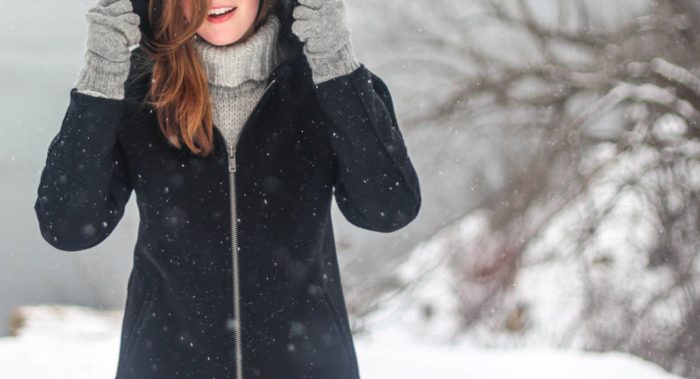
Working in Extreme Cold
There’s no other way to say it — it’s very, very, very cold outside. Blowing snow and frigid temperatures have descended upon the entire province of Alberta.
Working in extreme cold may stress a person’s heating system. When cold is combined with other stresses such as hard physical work, loss of fluids, fatigue or some medical conditions, it may lead to cold-related illness, disability and even death.

At very cold temperatures, the most serious concern is the risk of hypothermia or dangerous overcooling of the body. Another serious effect of cold exposure is frostbite or freezing of the exposed extremities such as fingers, toes, nose and ear lobes.
Hypothermia could be fatal in the absence of immediate medical attention.
Warning signs of hypothermia can include complaints of nausea, fatigue, dizziness, irritability or euphoria. Workers can also experience pain in their extremities (hands, feet, ears, etc.), and severe shivering. Workers should be moved to a heated shelter and seek medical advice when appropriate.
Early warning signs
Warning signs of cold stress include:
• feeling cold and shivering
• loss of feeling or tingling in fingers and toes
• trouble moving fingers, hands and toes (trouble doing tasks)
• frost nip (outermost layers of skin turn white)
• “unusual –umbles”, such as stumbles, mumbles, fumbles and grumbles
Worsening symptoms:
• extreme shivering, and then shivering stops
• impaired coordination
• confusion
• frost bite (skin freezes deeply, turning blue or red)
• loss of consciousness
How to stay warm:

• wear layered and insulating clothing
• cover exposed skin
• stay in the sun
• take breaks inside
• keep footwear dry
• keep moving to generate body heat (but avoid sweating)
What should I know about personal protective equipment (PPE) for working in the cold?
Clothing:
Protective clothing is needed for work at or below 4°C. Clothing should be selected to suit the temperature, weather conditions (e.g., wind speed, rain), the level and duration of activity, and job design. These factors are important to consider so that you can regulate the amount of heat and perspiration you generate while working. If the work pace is too fast or if the type and amount of clothing are not properly selected, excessive sweating may occur. The clothing next to body will become wet and the insulation value of the clothing will decrease dramatically. This reduction in insulation increases the risk for cold injuries.
• Clothing should be worn in multiple layers which provide better protection than a single thick garment. The air between layers of clothing provides better insulation than the clothing itself. Having several layers also gives you the option to open or remove a layer before you get too warm and start sweating or to add a layer when you take a break. It also allows you to accommodate level of activity, changing temperatures and weather conditions.
- The inner layer should provide insulation and be able to “wick” moisture away from the skin to help keep it dry.
- The additional layers of clothing should provide adequate insulation for the weather conditions under which the work being done. They should also be easy to open or remove before you get too warm to prevent excessive sweating during strenuous activity. Outer jackets should have the means for closing off and opening the waist, neck and wrists to help control how much heat is retained or given off. Some jackets have netted pockets and vents around the trunk and under the arm pits (with zippers or Velcro fasteners) for added ventilation.
- For work in wet conditions, the outer layer of clothing should be waterproof.
- If the work area cannot be shielded against wind, an easily removable windbreak garment should be used.
- Under extremely cold conditions, heated protective clothing should be made available if the work cannot be done on a warmer day.
- Wear a hat suitable for the conditions, including being able to keep the ears warm. If a hard hat is required, a knit cap or a liner under a hard hat can reduce excessive heat loss. Consult with the hard hat supplier or manufacturer for appropriate liners that do not compromise the protection provided by the hard hat.
- Cotton is not recommended. It tends to get damp or wet quickly, and loses its insulating properties. Wool and synthetic fibers, on the other hand, do retain heat when wet.
Socks:

You may prefer to wear one pair of thick, bulky socks or two pairs – one inner sock of silk, nylon, or thin wool and a slightly larger, thick outer sock. If work conditions permit, have extra socks available so you can dry your feet and change socks during the day. If two pairs of socks are worn, the outer sock should be a larger size so that the inner sock is not compressed.
Always wear the right thickness of socks for your boots. If they are too thick, the boots will be “tight,” and the socks will lose much of their insulating properties when they are compressed inside the boot.
Face and Eye Protection:
In extremely cold conditions, where face protection is used, eye protection must be separated from the nose and mouth to prevent exhaled moisture from fogging and frosting eye shields or glasses. Select protective eye wear that is appropriate for the work you are doing, and for protection against ultraviolet light from the sun, glare from the snow, blowing snow/ice crystals, and high winds at cold temperatures.